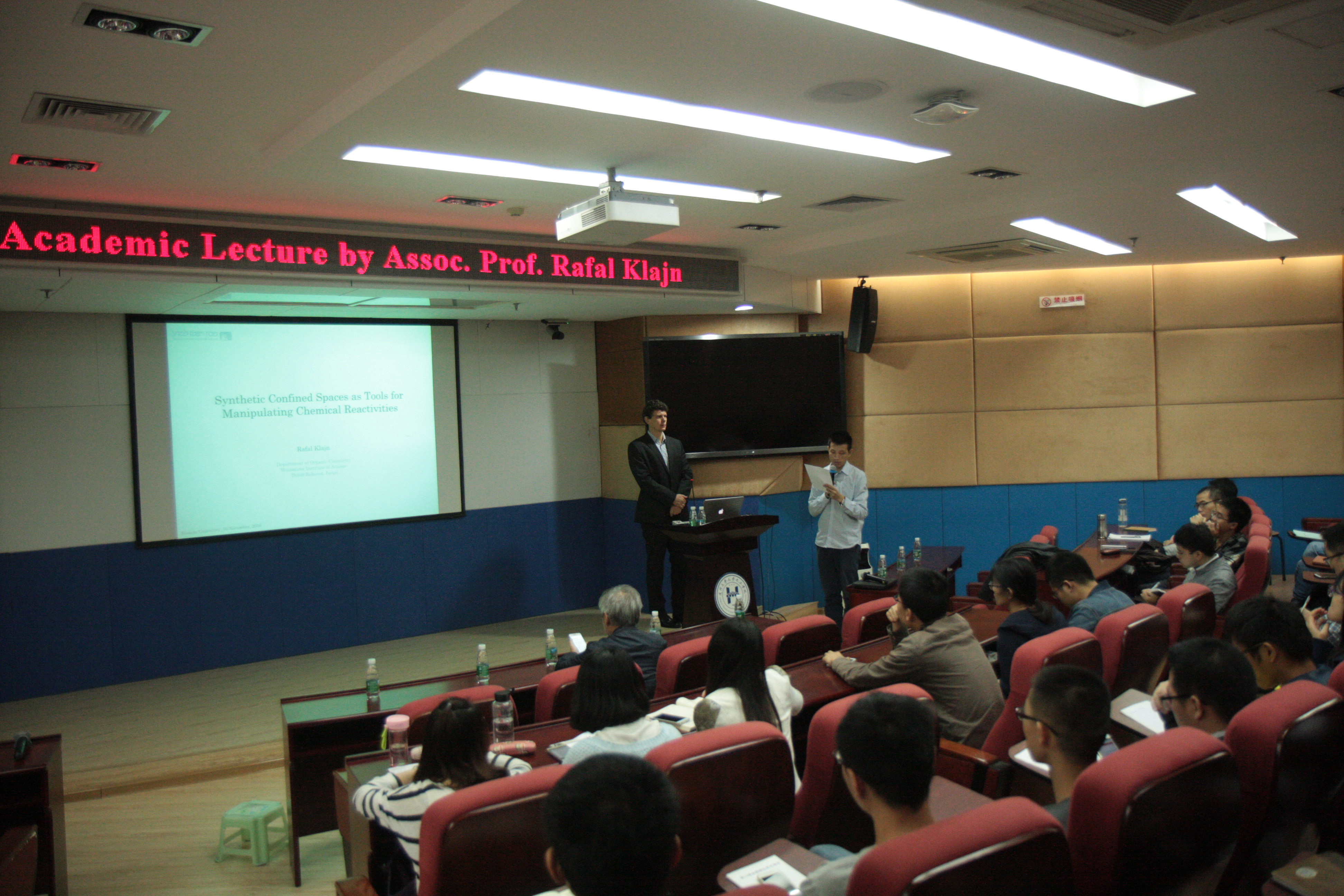Title: Synthetic confined spaces as tools for manipulating chemical reactivities
Speaker: Rafal Klajn, Department of Organic Chemistry, Weizmann Institute of Science
Date/Time: 10:00-11:20 AM, Nov.10, 2016 (Thur.)
Location: Room 202 in the Lujiaxi Building

Abstract:
Nature has long inspired chemists with its abilities to stabilize otherwise ephemeral chemical species, to perform chemical reactions with unprecedented rates, yields, and selectivities, and to synthesize complex molecules and fascinating inorganic nanostructures with seemingly effortless ease. What natural systems consistently exploit – which is yet fundamentally different from how chemists perform reactions – is their aspect of nanoscale confinement. In this talk, I will present six approaches to synthetic confined spaces our laboratory has investigated with the goal of manipulating chemical reactions and synthesizing novel molecules and nanostructures. These types of confined spaces include i) cavities of bowl-shaped metallic nanoparticles [1], ii) surfaces of spherical metallic nanoparticles [2], iii) nanopores within porous aromatic frameworks [3], iv) nanopores within reversibly self-assembly colloidal crystals [4,5], v) metal-organic self-assembled cages, vi) nanopores within non-close-packed nanoparticle superlattices.
Reference:
[1] Y. Ridelman, G. Singh, R. Popovitz-Biro, S. G. Wolf, S. Das, R. Klajn, Small 2012, 8, 654.
[2] T. Zdobinsky, P. S. Maiti, R. Klajn, J. Am. Chem. Soc., 2014, 136, 2711.
[3] P. K. Kundu, G. L. Olsen, V. Kiss, R. Klajn, Nat. Commun, 2014, 5, 3588.
[4] P. K. Kundu, D. Samanta, R. Leizrowice, B. Margulis, H. Zhao, M. Börner, T. Udayabhaskararao, D. Manna, R. Klajn, Nat. Chem., 2015, 7, 646.
[5] H. Zhao, S. Sen, T. Udayabhaskararao, M. Sawczyk, K. Kučanda, D. Manna, P. K. Kundu, J.-W. Lee, P. Král, R. Klajn, Nat. Nanotech., 2016, 11, 82.